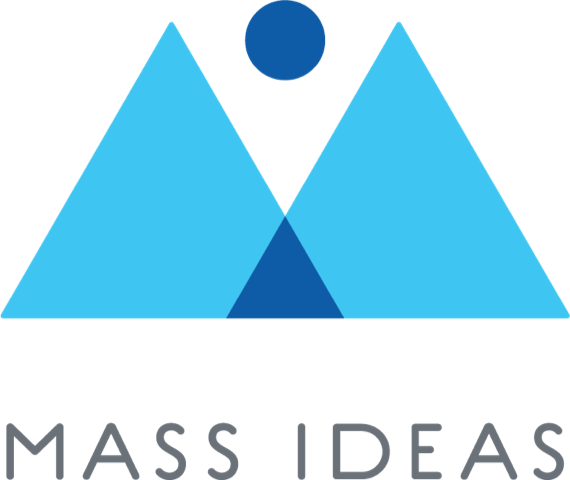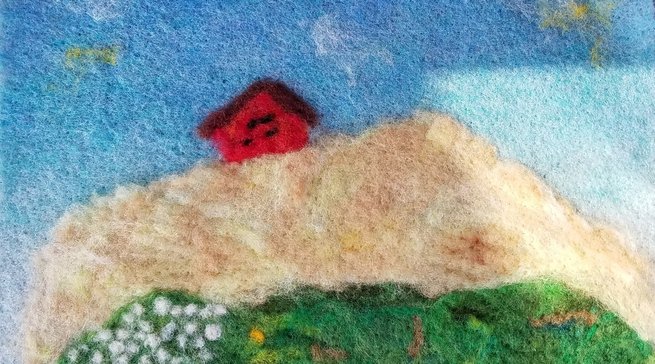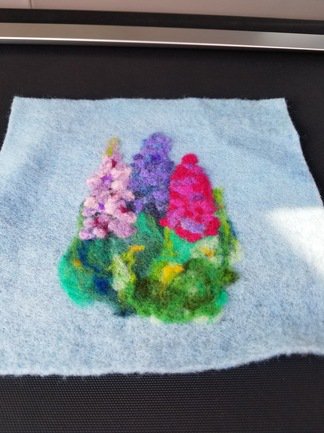A Year in the Making: The Third Lesson My New Year's Resolution Taught Me about Next Gen Learning
Liza Veto is the Program Officer for Mass IDEAS.
A few years ago, I decided to set fun New Year's resolutions to prompt myself to make time for joyful things. It was in that spirit that I determined to take a creative class each month in 2017.
This is the third post in a series about my experiences implementing my resolution throughout the year. In my first post, I talked about how making provides a different type of learning than most traditional schools provide; in the second, I reflected on the sense of accomplishment that comes with making. This post describes what I learned about where learning can happen, offers some insights I gained by reflecting on my needle felting and block printing experiences, and provides additional resources.
Lesson #3: High-quality learning can happen both inside and outside of schools.
Lesson learned: August 2017, needle felting; block printing
In 2017, the more making I did, the more alert I was for chances to make. My August vacation to Prince Edward Island and Maine led to two unanticipated opportunities. Looking for something to do on a rainy day in PEI, I went in search of the Belfast Mini Mills, where I learned how to needle felt, sitting in the middle of the store as customers shopped for yarn, and various staff members provided instruction throughout the day. Later in my trip, an overcast sky led to an outing to the Wendell Gilley Museum in Southwest Harbor, Maine; while I was there, an arts educator gave me an individual tutorial on block printing since no kids had shown up for the rainy day workshop she had planned.
Although some of my New Year's resolution classes this year were held in schools (e.g. North Bennet Street School, Milk Street Cooking School), others were conducted quite effectively elsewhere. I would argue that both of my August making sessions were enhanced by the non-school environments in which they were held. My crow-themed block print was heavily inspired by the realistic bird carvings in the glass cases around me; watching wool being cleaned and carded in the mill helped me understand the mechanics of needle felting.
Something would have been lost in translation if either of these learning opportunities had taken place in a generic classroom in a traditional school building. (An additional benefit: my making in the middle of these real-world environments encouraged other patrons to engage; two people joined in the impromptu block printing tutorial because they saw me doing it.)
Reflections and Insights
As I reflect on my own K-12 education, I still remember various learning-centered field trips to museums, nature centers, and historic sites; these learning trips outside of school made significant impressions on me. For instance, I remember the 4th grade trip to the state capitol building and the houses of local luminaries Mark Twain and Harriet Beecher Stowe much more vividly today than I do the many other days we spent studying Connecticut history.
As appreciative as I am for those experiences, they were a series of isolated events (e.g. the 4th grade class trip), even for students like me attending well-resourced public schools. What if learning outside the school building was a regular component of every class, not a special, annual event? Writing this as an adult, I'm keenly aware of the many costs, logistics, and other factors educators take on to lead field trips like mine; I also understand that these added challenges are direct contributors to the infrequency of trips, especially in economically disadvantaged communities.
But what if we thought more broadly about learning outside school buildings instead of being stuck in a formal field trip rut? Many local community assets could be more intentionally used by schools as learning environments, including playgrounds or parks, family businesses, libraries, senior centers, transit stations, municipal buildings, historic sites, and food trucks. Traveling a long distance isn't required to engage students; I think of a visit a few years ago to Parker Elementary School in New Bedford, MA, where students measured out the dimensions of a whale on the blacktop behind the building. They had paper, pencils, rulers, and string, and were absolutely captivated by that learning activity; they also took home a much better grasp of the scale of the animal that is central to their community's history.
Even as we think about creating learning opportunities outside of school buildings, we also need to consider the types of activities that can really maximize students' learning in those settings. I remember many a field trip where we were brought to an amazing location to fill out worksheets that we could have completed back in our classrooms.
What experiences, resources, and examples can the non-school locale offer that can't be found at school? The Gilley Museum has over 100 realistic bird carvings I couldn't have seen elsewhere, and a library of ornithology reference materials and carving patterns. The Mini Mills produces and dyes its own roving, an important material for needle felting, and has equipment to finish my pieces more professionally than I could have done at home. Often, the on-site staff, volunteers, owners, and experts can co-develop lessons with school-based educators to incorporate the site's treasures and quirks; they also may be willing to provide special activities for student groups that they wouldn't normally supply with general admission.
Want to learn more about creating learning opportunities outside of school buildings? Check out Report 11 from the MyWays Student Success Series, which focuses on creating a Wider Learning Ecosystem not limited to schools. A recent post about community partnerships describes how high schools in Colorado and California teamed up with local industries and higher education to provide real-world learning opportunities for student. And It Takes a Village: Talent Cities at Vista Unified discusses how real-world learning opportunities in Vista, CA, are one strategy the district is using to engage middle school students.
Tip for crafting your own Year in the Making: Both big and small local museums, mills, studios, and workshops offer classes and special programming. These can range from more intensive, multi-week courses, to shorter exploratory workshops like the block printing offered at the Wendell Gilley Museum, or more casual tutorials like the needle felting instruction I received at the Belfast Mini Mills. These locations may provide additional historical context for the craft, an understanding of the sources of materials, craft-specific books and other educational materials, and/or one-on-one guidance you might not receive in a more formal course.



